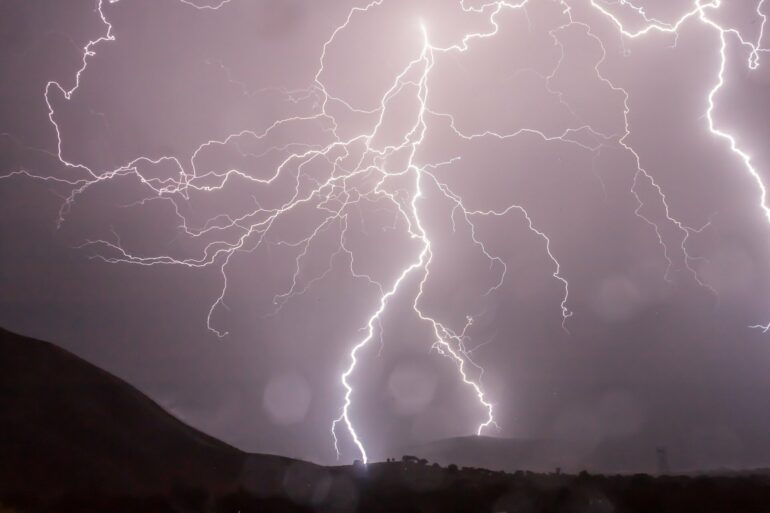In 1952, Stanley Miller and Harold Urey made sparks fly in a gas-filled flask meant to reflect the composition of Earth’s atmosphere around 3.8 billion years ago. Their results suggested that lightning could have led to prebiotic molecules necessary for the evolution of life, such as amino acids. At the time, scientists thought the early atmosphere would have been primarily methane and ammonia, but by the 1990s, experts argued for an atmosphere filled with carbon dioxide and molecular nitrogen.
Now, a new study suggests that the composition of Earth’s primordial atmosphere likely made it harder to generate lightning, which may have increased the time it took to generate and accumulate prebiotic molecules important for life.
Lightning Behavior in Different Atmospheric Compositions
Electrons behave differently in an atmosphere composed of methane and ammonia versus one made mostly of carbon dioxide and molecular nitrogen. It stands to reason lightning discharges would behave differently, too, which could affect the likelihood of prebiotic molecules forming on early Earth. Yet few people have modeled how lightning discharges vary in different atmospheric environments.
To look at how often electrons and gas molecules would have collided in the two versions of early Earth atmospheres, Köhn et al. modeled the probability of discharge sparking—the first step to a lightning strike. They found that in the carbon dioxide–nitrogen atmosphere, it’s harder to get lightning to spark.
“Basically, in the nitrogen- and carbon-rich atmosphere, you need stronger electric fields for a discharge to initiate,” said Christoph Köhn, a scientist at the National Space Institute at the Technical University of Denmark, who led the study.
The models revealed that the carbon dioxide and nitrogen atmosphere needed about a 28% stronger electric field for streamers—the precursors of lightning—to discharge, because gas molecules and electrons are less likely to collide and build up electrical charges that can generate lightning strikes. Scaling up over space and time suggests there may have been fewer lightning strikes early in Earth’s history, therefore shrinking the odds of generating prebiotic molecules.
“If lightning discharges were responsible for the production of prebiotic molecules, it’s important to get a very good theoretical understanding of what happened,” said Köhn. “The big question is still, Where do all these prebiotic molecules come from?”
The study strictly modeled the earliest stages of a lightning strike—the sparks that start strikes—so for Köhn and colleagues, the next steps are to model whole lightning strikes and couple that with models of atmospheric chemistry. Together these studies could give a more complete look into how lightning may have been linked to prebiotic molecules.
More information:
Rebecca Dzombak, Lightning Had Difficulty Forming in Early Earth’s Atmosphere, Eos (2022). DOI: 10.1029/2022EO220187 C. Köhn et al, Streamer Discharges in the Atmosphere of Primordial Earth, Geophysical Research Letters (2022). DOI: 10.1029/2021GL097504
Provided by
American Geophysical Union
This story is republished courtesy of Eos, hosted by the American Geophysical Union. Read the original storyhere.
Citation:
Early Earth’s atmosphere was less conducive to lightning (2022, April 11)



